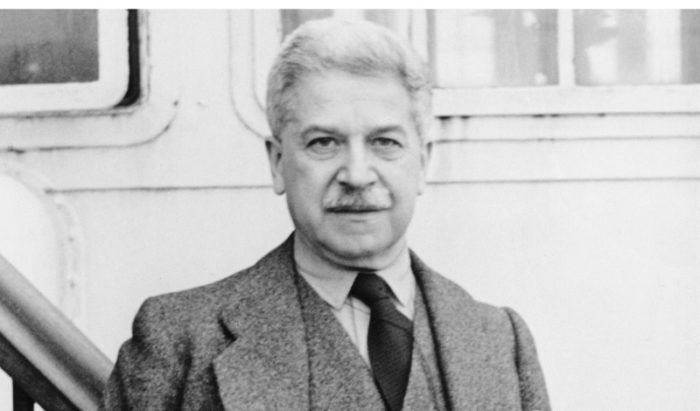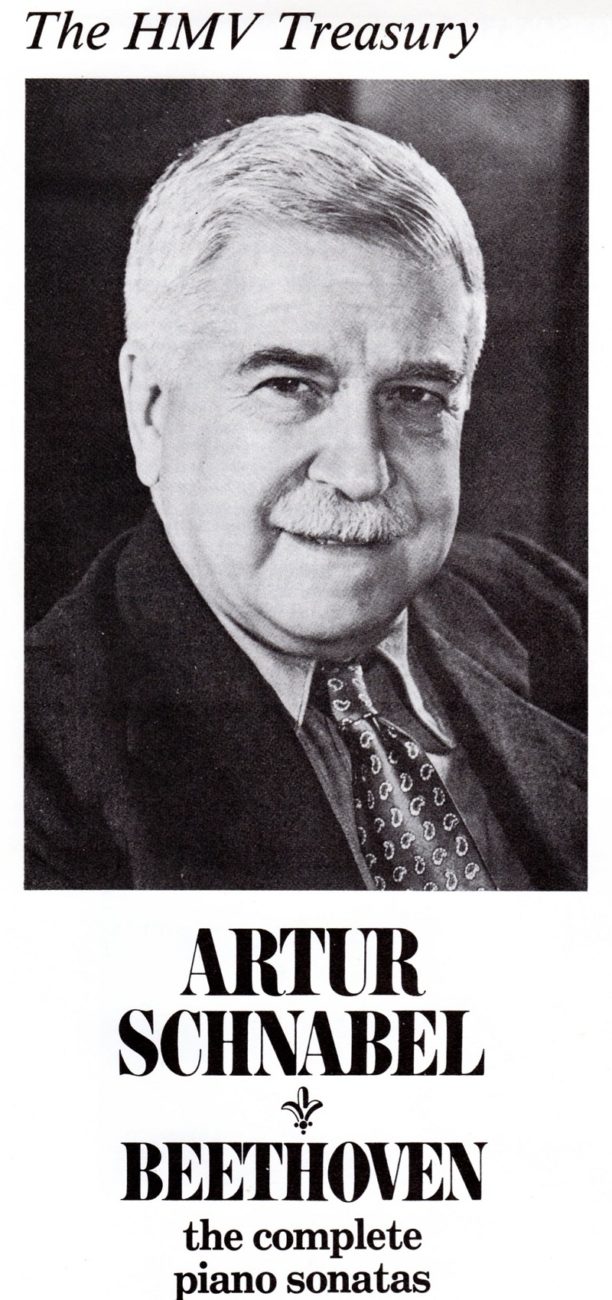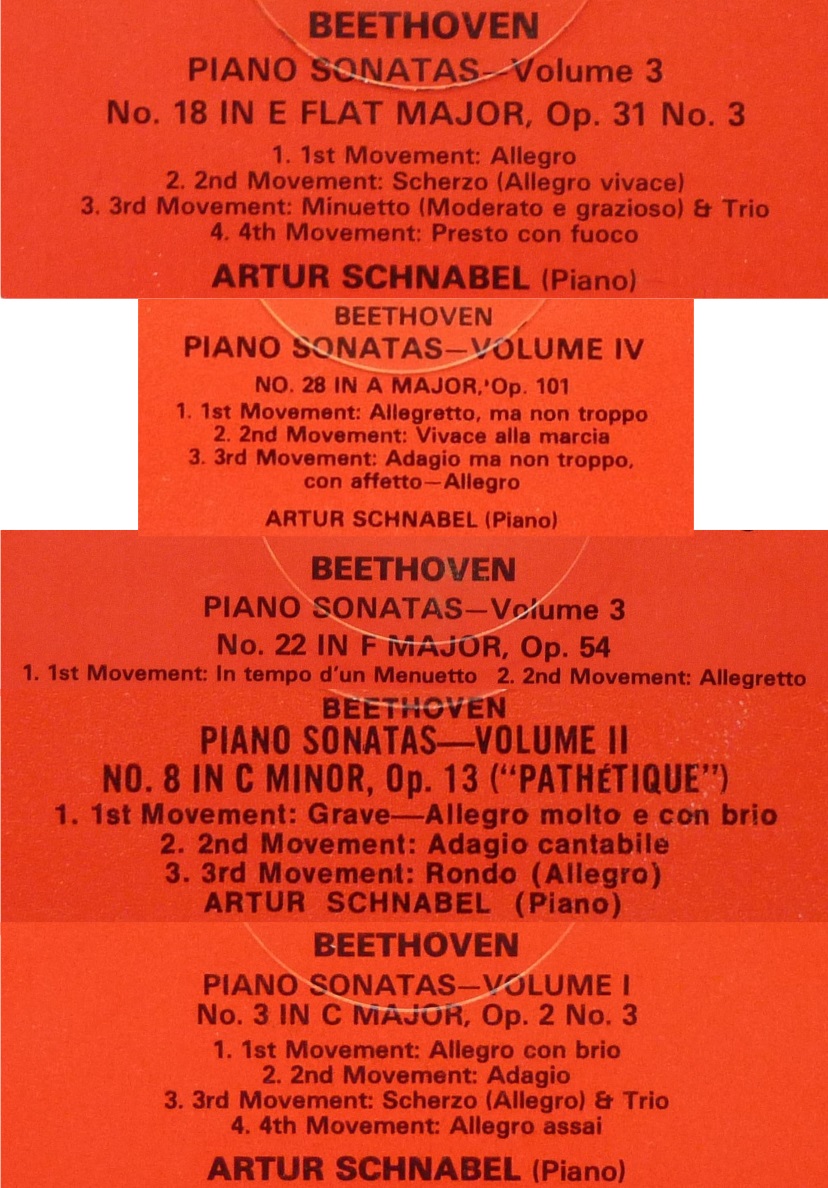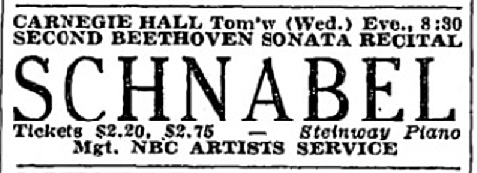
Schnabel – Beethoven Sonates – II/VII – n° 18 Op.31 n°3 – n°28 Op.101 – n°22 Op.54 – n°8 Op.13 & n°3 Op.2 n° 3
Sonate n°18 Op.31 n°3: 25 Mars 1932
Sonate n°28 Op.101: 24 Avril 1934
Sonate n°22 Op.54: 11 Avril 1933
Sonate n°8 Op.13: 2 Octobre 1933; 23 Avril 1934
Sonate n°3 Op.2 n°3: 26&27 Avril 1934
Artur Schnabel, piano
London Abbey Road Studio n° 3 – Engineer: Edward Fowler – piano: Bechstein
Source: disques 33 tours « The HMV Treasury »


Le deuxième programme de l’intégrale des 32 sonates de Beethoven par Artur Schnabel comportait les cinq sonates ci-dessus, dont les deux premières ont été jouées en première partie de concert.
Pour plus de détails sur les sept récitals de cette intégrale, cliquer ICI

Pour le deuxième concert (22 janvier) de l’intégrale donnée à Carnegie Hall en 1936, nous disposons de la critique d’Howard Taubman qui va pour l’essentiel dans le même sens que son confrère Olin Downes: Il souligne tout d’abord à quel point l’oreille était réjouie par une richesse de phrasés, de nuances et de dynamique tout le long de chaque œuvre, que cependant l’auditeur n’avait jamais son attention détournée par des fragments, mais qu’il était conduit à voir toute la logique de chaque composition. Il note également que la réussite de ce récital ne pouvait que rendre difficile de soutenir l’objection de certains que les interprétations de Schnabel seraient trop intellectuelles, et que l’émotion en serait évacuée par la prééminence de la tête sur le cœur, car il à joué avec brillance et tempérament. Et que si le pianiste ne laissait pas libre cours à son tempérament, c’était pour de bonnes raisons.
« La sonate dite « Pathétique » (n°8 Op.13) a été jouée avec incandescence, sans qu’elle puisse virer à la sentimentalité. La sonate en mi bémol majeur (n°18 Op.31 n°3) était vibrante, et pleine de brio. Et pour une pleine compréhension de la profondeur de l’imagination de M. Schnabel, il faut mentionner la grandeur et la noblesse de son jeu dans l’Op.101 (n°28). Le public a une nouvelle fois écouté dans un silence qu’on ne rencontre que lors d’événements rituels comme le cycle Wagner en matinée au Metropolitan. »
Artur Schnabel’s second program of the complete Beethoven sonatas was comprised of the above mentioned five sonates, two of which being played before the intermission.
For a detailed description of the seven programs of his complete performances of Beethoven’s 32 sonatas, click HERE

For the second concert (22 January) of the complete performance of the 32 Sonatas given at Carnegie Hall in 1936, we have an article by Howard Taubman who basically shares the view of his associate Olin Downes: He underlines in the first place that the ear caught innumerable felicities of phrase, nuance and dynamics, as a work pursued its course and that the auditor nevertheless was never deterred by fragments, but compelled to see the complete logic of each composition. Objecting to his interpretations on the ground that they are intellectualized and that the emotion is wrung out by the predominence of the head over the heart is a thesis difficult to defend in the face of last night’s accomplishment. For Mr. Schnabel played with brilliance and temperament. True, his temperament was held in leash, and with good reasons.
« The sonata known as the « Pathétique » (n°8 Op.13) was played with enkindling warmth but it was not permitted to deteriorate into sentimentality. The E flat major sonata (n°18 Op.31 n°3) was vibrant, full of gusto. For a full comprehension of the profundity of Mr. Schnabel’s imagination, one must speak of the grandeur and nobility of his playing of Op.101 (n°28). The audience again observed the hushed attention that is only perceptible at ritual events like the Wagner matinee cycle at the Metropolitan. »




2 réponses sur « Schnabel – Beethoven Sonates – II/VII – n° 18 Op.31 n°3 – n°28 Op.101 – n°22 Op.54 – n°8 Op.13 & n°3 Op.2 n° 3 »
HD/Hi-Res (24 bits/88 KHz):
https://e.pcloud.link/publink/show?code=kZWkWHZP10VJOdCKrLtGRvvH6DrvyuVKttX
Format CD (16 bits/44 KHz):
https://e.pcloud.link/publink/show?code=kZnkWHZWzb0SI72LQyGNRrkxUg26uSXEy6k
Thank you again, as always!